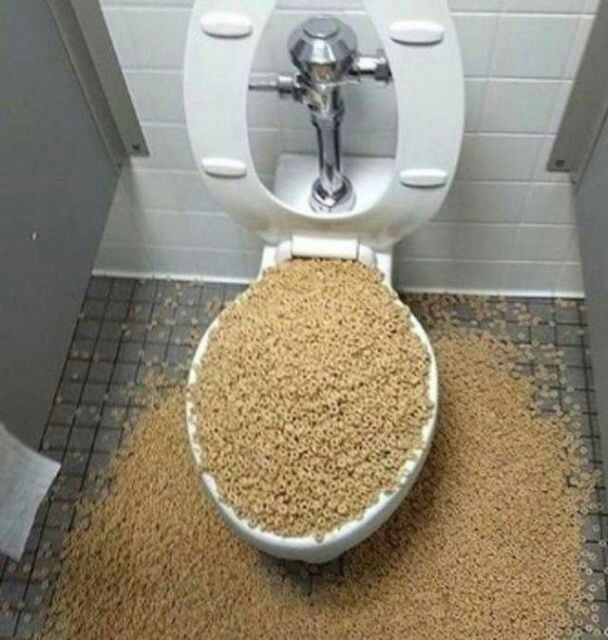Can One to Flush Food in the Toilet?
Can One to Flush Food in the Toilet?
Blog Article
Presented here further down you will find a good deal of wonderful answers relating to Think Twice Before Flushing Food Down Your Toilet.

Introduction
Many people are often faced with the issue of what to do with food waste, especially when it pertains to leftovers or scraps. One usual concern that occurs is whether it's all right to flush food down the toilet. In this article, we'll delve into the reasons why people could take into consideration flushing food, the consequences of doing so, and different techniques for appropriate disposal.
Reasons why people may think about purging food
Absence of awareness
Some people might not understand the possible harm triggered by flushing food down the commode. They might incorrectly believe that it's a harmless practice.
Comfort
Flushing food down the commode may appear like a quick and simple option to getting rid of unwanted scraps, especially when there's no nearby garbage can readily available.
Idleness
Sometimes, individuals may merely select to flush food out of large negligence, without considering the effects of their actions.
Consequences of flushing food down the toilet
Environmental influence
Food waste that ends up in waterways can add to air pollution and damage water environments. In addition, the water utilized to flush food can strain water sources.
Pipes issues
Purging food can result in clogged up pipelines and drains, causing costly plumbing repairs and inconveniences.
Types of food that should not be purged
Coarse foods
Foods with fibrous textures such as celery or corn husks can obtain entangled in pipes and cause blockages.
Starchy foods
Starchy foods like pasta and rice can absorb water and swell, bring about clogs in pipelines.
Oils and fats
Greasy foods like bacon or cooking oils need to never be purged down the toilet as they can solidify and create clogs.
Appropriate disposal approaches for food waste
Using a waste disposal unit
For homes outfitted with waste disposal unit, food scraps can be ground up and flushed via the plumbing system. Nevertheless, not all foods are suitable for disposal in this manner.
Recycling
Certain food product packaging materials can be reused, reducing waste and minimizing ecological influence.
Composting
Composting is an environment-friendly way to take care of food waste. Organic products can be composted and utilized to enhance soil for horticulture.
The relevance of correct waste monitoring
Minimizing environmental injury
Appropriate waste management techniques, such as composting and recycling, assistance minimize air pollution and preserve natural deposits for future generations.
Securing pipes systems
By avoiding the method of flushing food down the commode, property owners can protect against costly plumbing repair services and keep the stability of their plumbing systems.
Conclusion
Finally, while it may be appealing to flush food down the bathroom for benefit, it is necessary to understand the potential consequences of this action. By embracing proper waste management methods and dealing with food waste responsibly, people can add to healthier pipes systems and a cleaner atmosphere for all.
FLUSH FOOD DOWN THE TOILET?
FLUSHING FOOD CAN CAUSE BLOCKED DRAINS IN YOUR HOME
All of the plumbing fixtures in your home are connected to the same sewer pipe outside of your home. This outdoor sewer pipe is responsible for transporting all the wastewater from your home to the Council sewer mains. Even small pieces of food that go down the kitchen sink can cause problems for your sewer. It should therefore be obvious that flushing larger bits of food, such as meat, risks a clog in either the toilet itself or the sewer pipes. Flushing greasy food is even more problematic because oil coagulates when it cools, coating the interior lining of your pipes.
THE TOILET IS NOT A BIN
Food isn’t the only thing that people shouldn’t be flushing down the toilet. People use the toilet to dispose of all kinds of things such as tampons, makeup wipes, dental floss, kitty litter and even underwear. Water goes to great lengths to educate residents about the high costs and stress placed on wastewater treatment systems simply from people flushing the wrong stuff down the toilet. It costs taxpayers millions of dollars each year, and homeowners thousands in blocked drain repairs.
FLUSHING FOOD IS A WASTE OF WATER
Flushing food is a waste of our most precious resource - water. In June this year Level 1 water restrictions were introduced to protect water supply from drought conditions. Much of New South Wales continues to be affected by prolonged drought with recent figures revealing up to 97 per cent of the state remains in drought. Depending on whether you have a single or dual flush toilet, every single flush uses between five and 11 litres of water. In the current climate this is a huge amount of water to be wasting on flushing food that should be placed in the bin (or better yet, the compost).
https://www.jabplumbingsolutions.com.au/blog/can-you-flush-food-down-the-toilet

Hopefully you enjoyed our piece about Think Twice Before Flushing Food Down Your Toilet. Thanks for taking a few minutes to browse our short article. If you enjoyed reading our article kindly be sure to share it. Kudos for being here. Kindly pay a visit to our site back soon.
Click For More Info Report this page